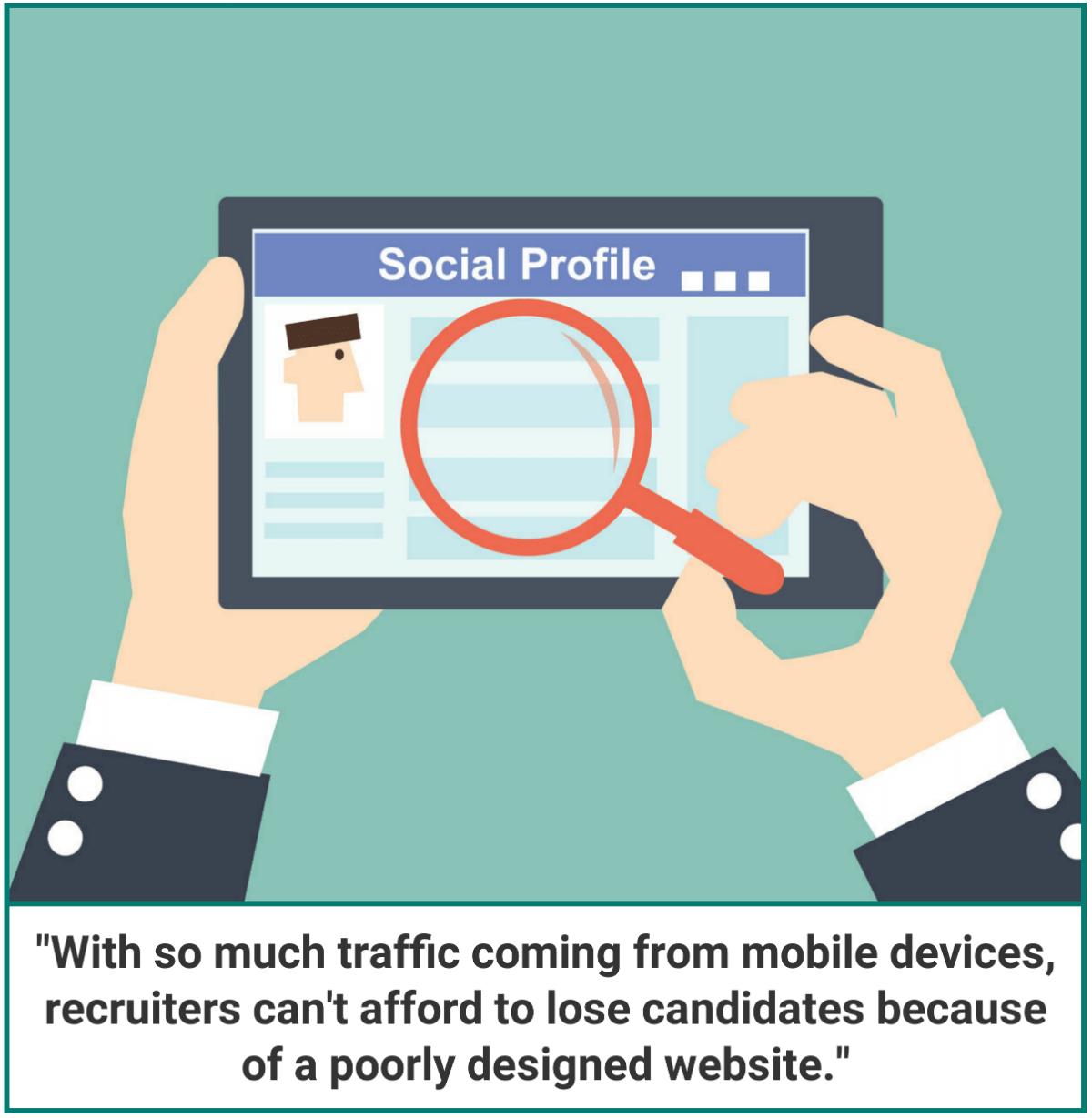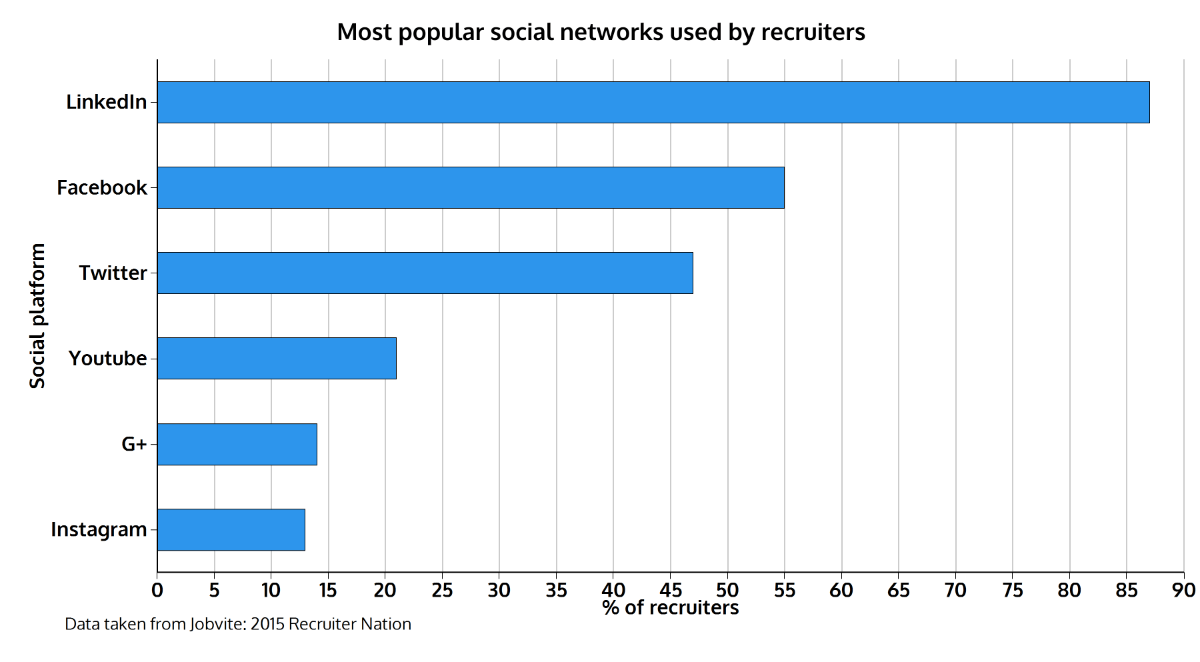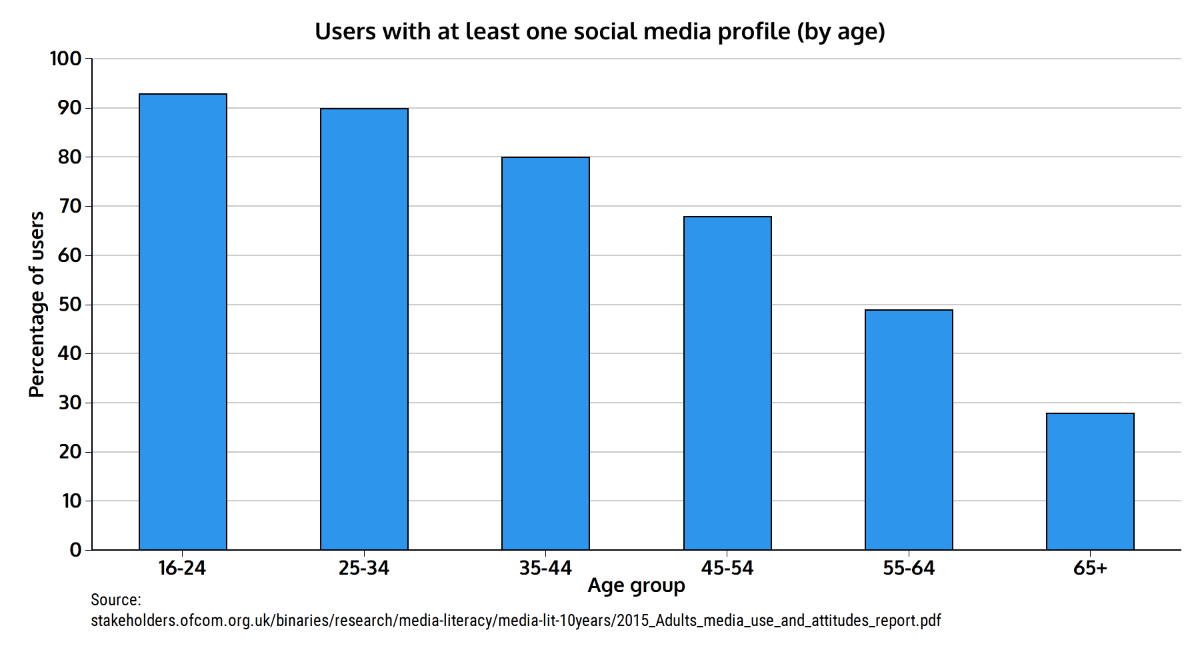Technology: Builder of relationships. Giver of knowledge. Portal to ubiquity.
There’s no question that computers are perpetually altering the way that we live, but have you ever stopped to think about how technology has changed recruitment and whether or not it will make recruiters obsolete? No?
Well before we continue on this path towards an automated economy, let’s take a step back and look at just how technology has impacted the recruitment industry.
After all, as Ferris Bueller famously once said: “Life moves pretty fast. If you don’t stop and look around once in a while, you could miss it.”
A history of technology in recruitment
While technology might now be commonplace in recruitment, there was once a time when the hiring process was reserved for paper trails and eye contact. Although these pre-tech days are a thing of the past, it’s interesting to see just how far the industry has come in utilising the latest innovations.

Recruitment agencies hit the streets of the UK in the 1940s, in an attempt to replenish the workforce following the Second World War. Unsurprisingly, the industry was initially devoid of technology, typically relying on handshakes, paper applications and the printed press (the internet of its day).
The industry remained IT-free for around 40 years, with computers not starting to emerge in agency offices until the 1980s. Technology has accelerated since this point and the internet, social media and mobile devices have all gone on to redefine the recruitment process.
What is an applicant tracking system?
The applicant tracking system (ATS) was one of the first facets of recruitment specific tech to break into the recruitment industry and they quickly established themselves as a key player in the early 1980s.
Put simply, an applicant tracking system is a piece of software that helps recruiters, employers and HR staff organise the hiring process. Almost all recruitment agencies will use some form of ATS, while nearly 70% of in-house recruiters also use one.
Key features of an ATS:
- Candidate management.
- CV keyword screening.
- CV ranking.
- Job board integration.
- Interview scheduling.
- Defined workflow.
Why do recruiters use tracking systems?
With an average of 40-60 applications for every job and countless people registering with an agency each day, an ATS helps organise the flow of candidates, while saving recruiters the hassle of having to read through every single CV that comes into their inbox.
The best systems are designed to search CVs for particular criteria, making it easy to find the right match for a vacancy. This function is further improved when you have a piece of technology that not only flags up the best applications in relation to a job, but also ranks them in order of suitability.
Applicant tracking systems, as well as helping to manage current applications, can also store candidate data for future vacancies. Just because an applicant was rejected for a job in the past, doesn’t mean that they won’t be suited to something else, and the ATS can help notify consultants if a suitable match arises.
Are applicant tracking systems still effective?
It’s easy to see how tracking systems have impacted recruitment since first being introduced, but are they still as effective as they once were?
Candidates have become wise to the ATS and particularly the keyword search function that so many recruiters utilise. You don’t have to search very hard to find blog posts on ‘how to beat the system’ and get found by the tracker, which can somewhat dilute the effectiveness of the tech (or improve the quality of the applications, depending on your POV).
Machines will never truly be able to oust consultants when it comes to making top hires.
It can also be said that many recruiters have become over-reliant on ATS, choosing only to submit the CVs that the database has flagged up. Not all applications will be tailored to the criteria that the ATS is looking for though, meaning that some of the best candidates are slipping under the radar.
There’s no doubt that applicant tracking systems are helpful in narrowing down the field, but recruiters will always be needed to select the right candidate. Machines may be able to pick out some key terms, but only a consultant can assess qualities such as personality and cultural fit, minimising the risk to employers of making a bad hire.
How has the internet changed recruitment?
The recruitment process has successfully made the move online and this has provided a new avenue to attract both active and passive job seekers. It’s almost impossible to flourish in the modern recruiting game without the internet and it’s very difficult for candidates to find work too!
Job boards
When analysing the impact of the internet on recruitment, it’s impossible to omit job boards from the conversation. Before the days of these vacancy aggregators, candidate sourcing relied heavily on newspaper adverts, phone calls and referrals. Unsurprisingly, this was considered costly and time-consuming, without guaranteeing a high volume of response.
25% of UK adults use the internet to look for a job, meaning that the internet can potentially give recruiters access to a pool of over 13 million active candidates.
With the creation of job boards in the 1990s, however, the process of candidate attraction was made considerably easier. According to 2015 ONS figures (taken from the Opinions and Lifestyle Survey), 25% of UK adults use the internet to look for a job, meaning that the internet can potentially give recruiters access to a pool of over 13 million active candidates (using 2011 population).
By advertising vacancies online, therefore, recruiters are able to attract a lot of applicant response for a relatively low cost. This is even more powerful when we consider that job boards rank highly on Google for most job-hunting terms, effectively doing the SEO work for you! From a candidate perspective, it also allows users to apply for multiple jobs with just a few clicks. Win-win.
Online advertising
Not every candidate you’re looking for will go to a job board and see your ad, so why not dabble in a little-targeted advertising? One of the major strengths of online recruiting is the ability to place one piece of content in front of A LOT of the RIGHT people, so make the most of it.
In days gone by, traditional job advertising would be part of a whole printed campaign that included newspapers, magazines and posters. While fully capable of reaching a mass audience, printed job ads weren’t always considered the most effective, as they usually had a broad and unspecified viewership, a short window of impact and high placement costs.
The internet has provided solutions to almost all of these problems, however, and physical advertising is now a shrinking method of job seeker attraction.

So what’s so good about online recruitment? Well, targeted or banner advertising has grown across all industries and can improve the chances of your vacancy being viewed by relevant candidates (even when they’re not searching for jobs at that moment!).
Targeted adverts are made possible through cookies. Do you know that little message that says ‘this site uses cookies’? Well, those cookies are tracking the websites that users are landing on and building a profile of that person and what they’re interested in. They will then be shown adverts that relate to what they’ve been searching for.
As well as having the ad displayed to the people who might actually be interested in your position, they are also relatively low cost, offer 24/7 coverage and can be easily measured.
Video interviewing
Video streaming applications such as Skype and FaceTime have also managed to creep into the arsenal of the everyday recruiter. These platforms have led to the emergence of remote interviewing, a process where recruiters can screen candidates without having to invite them into the office.
There are a number of benefits to ‘Skype interviews,’ specifically the saving of time and money. Organising and facilitating a physical interview can be hard work, however, the convenience of Skype et al. means that this can be done at a time that works for both parties, possibly the same day. While this not only benefits large bustling agencies, it also aids single person operations who may not have the time or facilities to invite people for a face-to-face interview.
The impact of social media on recruiting
Social media has had a massive impact on all aspects of modern life and recruitment is certainly no exception. Social recruiting has grown in significance over the past decade, with 92% of recruiters using the major social platforms to find and attract candidates.

Social recruiting involves using any social platform to recruit staff. LinkedIn is the primary network for the majority of recruiters, but Facebook, Twitter and Youtube also rank highly amongst the social recruiting leading powers.
So why is social recruiting so popular? Barry Flack, a HR technology specialist who was named in the People Management Power List: HR Top 20, believes that social media provides a mutual platform for candidates and recruiters to connect.
He said: “Recruitment, like every other facet of our working life, has had to adapt to this digital age we are in. It has therefore meant we can access social media to attract and engage with people who are interested in our jobs and career propositions, using the platforms that they are readily using in their daily lives.”
More than just a platform for connection, social media enables recruiters and agencies to develop a brand voice in the marketplace. When competition is so fierce amongst recruitment consultancies, it’s important to stand out against a backdrop of similar services; something that social media affords its users.
Despite this, Alastair Blair, recruitment marketing expert at thePotentMix, thinks that recruitment firms aren’t making the most of social media, saying: “When it’s used well, social media can make a substantial difference, but often not as much as its advocates claim because most organisations don’t actually measure their results properly and, crucially, don’t get their websites properly set up to ensure they optimise traffic from all channels.”
Want to know more about social recruiting? Read our article on Social Media Recruitment: Hiring Strategies for more in-depth analysis.
How are recruiters using mobile?
Advances in mobile technology have completely revolutionised the way that recruiters attract, place and communicate with candidates. This era of mobile recruiting has grown substantially since the turn of the decade, as the industry reacts to a rise in ‘on-the-go’ internet use.
74% of adults access the internet away from their desktop computer, so it’s become increasingly important for agencies to tailor their service for the smaller screen.
So how have recruitment agencies reacted to mobile technology? Following the introduction of a new ranking algorithm in 2015, Google search results are now greatly influenced by a site’s compatibility with mobile devices. This means that recruiters, especially start-ups and small consultancies, had to make concerted efforts to bring their websites up to speed, or risk falling down the search pecking order.
There is more than just a need to appease the search engines though, and agencies are keen to offer a mobile experience that’s attractive to users. 74% of adults access the internet away from their desktop computer, so it’s become increasingly important for agencies to tailor their service for the smaller screen.
What makes a good candidate experience on mobile?
- Responsive drop downs.
- Easy to read text.
- Fast loading pages.
- No screen pinching.
- Simple forms.
With so much traffic coming from mobile devices, recruiters can’t afford to lose candidates because of a poorly designed website. Sites that aren’t optimised for mobile can potentially deter applicants and force users to bounce straight back to the search results and onto the site of a better-presented competitor (a high bounce rate also won’t help your SEO!).
Recruitment apps
In light of this need to engage with job applicants in a handheld format, many agencies have turned to app creation as a method of advertising jobs and attracting candidates. Although they’re yet to completely change the recruitment industry, apps are a growing area of jobseeker connection and vacancy matching.
Although many apps are merely an extension of an agency’s website, Tinder-style offerings are beginning to emerge in the market. The idea behind these is that candidates and recruiters can connect with nothing more than a swipe on their phone, creating a simple process that allows recruiters to view a lot of candidates quickly. This, however, can lead to impulsive and first impressions-based candidate sourcing, which might explain why recruitment decision makers are unwilling to throw their whole weight behind the concept.
With the worldwide app market being worth nearly £30 billion though, don’t be surprised to see recruitment apps become more of a feature in the future.
Has technology improved recruitment?
So while technology has undoubtedly had a huge impact on the recruitment process, has it been for the better? Of course, we’re all totally enamoured with the novelty of tech, but that doesn’t automatically mean that it has improved the standards of recruiting.
One area that technology has enhanced, be it via social media or mobile, is the ability to build and maintain the relationships that recruiters so desperately rely on. In years gone by, working connections were typically formed through face-to-face meetings and telephone conversations (which could be time consuming), but technology now allows this to be done from the comforts of the keyboard.
As well as improving the lines of communication, social media has successfully smashed the boundaries of the traditional talent pool. A recruiter is only as strong as their network of candidates and social media provides access to a seemingly infinite amount of active and passive job seekers.
The average recruiter has nearly 1,000 LinkedIn connections and this doesn’t take into account the number of Twitter followers and Facebook friends. All of this enables social recruiters to reach out to a lot of people in a very short timeframe.
In my experience, many companies are not very good at using technology, because in the rush to be part of the wave, they don’t properly understand the technology they are buying.
In fact, it can be said that modern-day tech has accelerated the entire recruitment process.
Applicant tracking systems, for instance, have taken the time out of initial candidate screening. With the ability to keyword search, recruiters no longer have to sift through countless CVs to find the criteria they’re looking for. Instead, they can simply rely on the ATS to recognise a candidate match. This is particularly useful when a job vacancy is over-subscribed and you’re looking to filter out the most suitable candidates.
Not all recruitment firms are completely adept at using technology though and Alastair Blair, thinks that agencies are investing in tech without fully being prepared for it.
He said: “In my experience, many companies are not very good at using technology, because in the rush to be part of the wave, they don’t properly understand the technology they are buying.”
Why technology will never replace recruiters
With the recruitment process becoming increasingly automated, you’d be forgiven for thinking that the influence of the recruiter is slowly diminishing. Can technology ever really replace recruiters?
There’s no ignoring the fact that technological advancement is threatening a number of professions, with 35% of jobs currently at ‘high risk of computerisation’ by 2040. Alastair Blair believes that we sometimes forget that “ours is not the only technological age where human advancement is proceeding in leaps and bounds,” however there will still be a place for top recruiters who are able to move with the times.
In his opinion: “There will be a place for the well-connected headhunter for many years to come, but run-of-the-mill matching will increasingly be done by technology. Don’t despair yet; it’s some way off. There is still a window of opportunity for those who don’t delude themselves about what’s coming and act now to find a way to create alternative business models.”
5 reasons why robots won’t be able to replace recruiters
Well, recruiters, it’s time to take a sigh of relief as I tell you that machines will never truly be able to oust consultants when it comes to making top hires. The reason? There are just some parts of the recruitment process that require a human touch.
1. Robots can’t sell
One large (but often undervalued) part of a recruiter’s job is actually selling a position to potential candidates. With the job market being so competitive, you might think that job seekers will jump at any opportunity, but this isn’t always the case. Part of the recruitment battle is making the role attractive, especially when dealing with passive candidates, and this tends to involve a salesy approach that computers can seldom replicate. Personality is therefore the order of the day, meaning that charismatic consultants will still be in high demand.
2. You need people to assess people
Secondly, while the automated process might be good at filtering applications, they’ll never be able to whittle down the candidates to just one. The ideal candidate requires more than just the right words on their CV, as employers are also looking for the right personality and soft skills to fit into their company. This is where recruiters come in, who are able to assess whether a candidate is the right cultural fit, as well as technical.
3. Technology can’t find everyone
While the majority of us are inseparable from our tech, not everyone can be accessed with just the tap of an app. There are currently three generations of workers in the UK labour market, and being careful not to stereotype, some generations are likely to be more adept with technology than others.

As the graph shows, the majority of social media users are under the age of 45, with less than half of 55-64-year-olds having at least one social profile. This means that by solely relying on technology, the recruitment industry would be missing out on a lot of experienced candidates.
4. People build relationships
Recruitment is all about relationships. Now, while certain facets of technology have aided the development of strong candidate-recruiter bonds, no amount of AI can strike up a connection with an individual. Social media can certainly extend the reach of your talent pool, but it’s your ability to develop a relationship that will engage them.
5. Automated recruitment is lazy recruitment
Technology, while perfectly capable of attracting low hanging fruit, just doesn’t have the resources to reach those candidates that are a little harder to get. Enticing in-demand professionals requires a multifaceted approach that includes modern technology and more traditional methods. Recruiters that rely solely on social media or online advertising, will fail to develop relationships with the best passive candidates, thus losing out to the less ‘lazy’ competition.
It can be said that modern-day tech has accelerated the entire recruitment process.
Conclusion
Technology is changing the way that recruiters operate and most would argue that the industry has vastly improved because of it. There’s no doubting, however, that technology will eventually take over certain facets of the recruiter’s job description and some may fear that their future as a consultant could be under threat. Fortunately, there will always be a need for top recruiters and the best will be able to move with technological progress and thrive within the ever-developing digital age.



